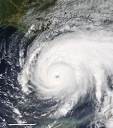All Faculty Excerpts
The Katrina Experience
 A year ago, many of us witnessed the overwhelming force of Hurricane Katrina. Most of us watched it from a safe distance on television. One of those watching was Gotham Teen and Creative Writing 101 teacher Stacy Aab. She decided to do something. For the past year, Stacy has been collecting oral accounts of diverse people affected by Katrina—those who stayed in the ravaged territory, those who left, those who lent a helping hand. Stacy plans to unite these voices in a book.
A year ago, many of us witnessed the overwhelming force of Hurricane Katrina. Most of us watched it from a safe distance on television. One of those watching was Gotham Teen and Creative Writing 101 teacher Stacy Aab. She decided to do something. For the past year, Stacy has been collecting oral accounts of diverse people affected by Katrina—those who stayed in the ravaged territory, those who left, those who lent a helping hand. Stacy plans to unite these voices in a book.Here is the voice of Dr. Ben deBoisblanc, a physician at Charity Hospital in New Orleans, who tended to the injured in the days after Katrina struck.
* * * * * *
We gathered up all of the fire department boats and National Guard trucks we could find. We loaded patients into the back. We brought them over to Tulane's parking garage. We set up a mini-intensive care unit on the rooftop, or just below the rooftop, just below where the helicopters were landing. We had 30 some-odd patients up there, all the ones that had respiratory failure, being bagged by hand, by nurses, therapists, and residents.
Watching all of these doctors deliver care without technology was a wonderful, wonderful thing. I struggled to understand at the time: why was it so moving? I think there were several reasons. Everywhere you looked there were outward signs of compassion: of touching, of holding, of petting. Emotions that I would have thought would have been reserved for a kinder, gentler time. I would have thought that, in the midst of all this chaos, people would just be running around doing things, and wouldn't have time to stop, to talk to a patient, to stop and pet a patient. But just the opposite occurred. Everywhere you looked, there were nurses and doctors petting patients. Men don't do a lot of hugging, but there were men hugging each other, patting each other on the back, and I said, gee, why is this? And then it was so obvious to me, it was almost like one of those duh moments, that for a nurse or a doctor to express compassion to a patient, to touch a patient, it's therapeutic not just for the patient, but for the caregiver. I think we were all scared. Not scared that we were going to die, but scared because we were trusted to take care of these patients, and honestly, we didn't know how it was going to turn out. Because we were scared, we needed that touch, and we got it by giving it.
I didn't realize how much technology shrouds the patient. We cover them in this veneer of technology and insulate them from ourselves. They become diagnoses, the guy with Good Pasture's, the woman with the stroke, the man with the appendicitis. When we lost that technology, it was almost like a little blossom erupted into this beautiful flower of a human being. We discovered the humanism in medicine again. And that very act seemed to make us more human. Made us vulnerable. Put us on the same level as our patients. No better, no worse, just different. Different responsibilities. But all equal.
It was interesting to watch the most senior physicians, our Chief of Neurosurgery, a Boyd professor, the highest academic rank you can achieve in the LSU system, sitting on the concrete, squeezing a bag on a patient, petting her on the forehead, not asking for anyone to help him, to relieve him, doing what he was moved to do. That day, that Thursday on the rooftop, was singularly the absolute pinnacle of my experience during Katrina. It was just a beautiful thing to watch.
* * * * * *
To hear more voices and learn about Stacy’s project, visit: The Katrina Experience. You can also follow Stacy's Katrina Project blog at The Huffington Post.
